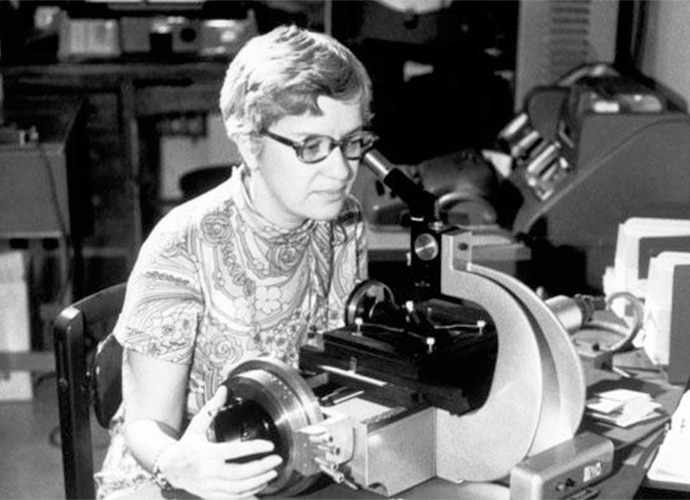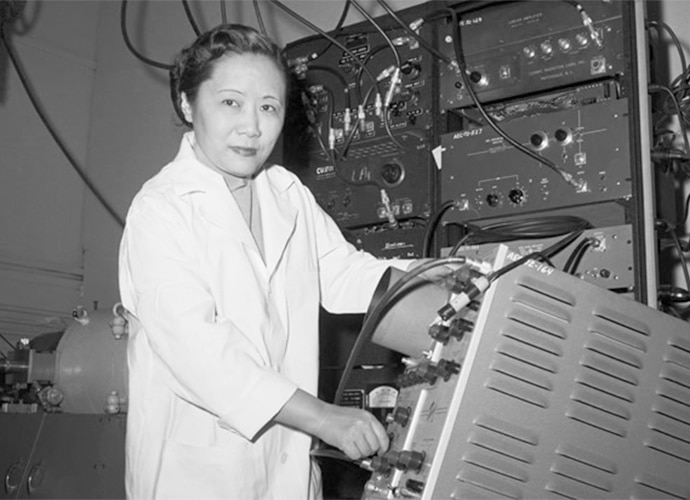Why the world has always been a hard place for women scientists

On December 25, 2016, a woman named Vera Rubin surrendered to her mortality at the age of 88. She would become another name on the extensive list of female scientists whose valuable contributions have never been honoured by a Nobel Prize – an award that is not given posthumously.
 |
| In the 1970s, astronomer Vera Rubin found evidence of a hypothetical type of invisible matter now called dark matter. [Photo: BBC] |
Throughout history, society deprived women of opportunities. Educating a girl child was considered taboo. In the 18th century, female scientists worked in hiding. Their research was not taken seriously and often not even accepted by the scientific community. They weren’t given due credit for their work. Today, society turns a blind eye to this blatant discrimination and questions the intellect of women – asking why, if women are as smart as men, do we not have as many accomplished female scientists? Society forgets the countless number of women whose discoveries and achievements were left unacknowledged, and in many instances, credit given to other male colleagues. This phenomenon is so common, it even has its own name – the Matilda Effect.
Dr Rubin isn’t the first woman to be on the receiving end of this subtle prejudice. In the early 20th century, Emily Noether – a mathematician from Germany devised a theorem called the Noether’s Theorem. This development would help physicists understand conservation of energy. Her work was revolutionary in the field of abstract algebra but was not enough to win her the Nobel.
Nettie Stevens, who discovered that the sex of an organism was determined by its chromosomes, never received the prize either. This discovery was credited to Thomas Hunt Morgan, a prominent name in genetics at that time. He wrote a textbook including his findings and completely ignoring the contribution of Dr Stevens, even though the letters they exchanged show that he asked her for details of her experiments. He won the Nobel for his “discovery” of genetic sex determination in 1933.
Lise Meitner was an integral part of the team that discovered the phenomenon of nuclear fission, which laid the foundation for harnessing nuclear energy. While Otto Hahn performed the experiments that later went on to prove the existence of nuclear fission, he failed to explain his results. Dr Meitner provided not only the explanation but also theoretical proof. A victim of both sexism and politics during World War 2, she didn’t even receive authorship on the groundbreaking paper. Hahn won the Nobel Prize in Chemistry. Despite being nominated 46 times, Dr Meitner never received the award.
Chien-Shiung Wu of China was Meitner’s contemporary, who also worked in the field of nuclear physics. Her expertise and help was sought by the physicists Tsung-Dao Lee and Ning Yang. Her experiments in this project resulted in a long-standing law of quantum physics being disproved and turned the field on its head. While Yang and Lee won a Nobel Prize for this in 1957, Wu was snubbed, leaving the physics community aghast.
 |
| Chien-Shiung Wu's experiments resulted in a long-standing law of quantum physics being disproved. [Photo: History.com] |
Perhaps the most famous example of sexism in science is Rosalind Franklin. She produced an X-ray image of a DNA molecule, showing its possible structure for the first time. Her work was published at the exact same time as that Francis Crick and James Watson’s DNA double helix work and included several details of DNA structure that Watson and Crick missed but she didn’t receive even half the adulation.
Watson and Crick are solely credited with deciphering DNA structure and won the Nobel Prize along with Maurice Wilkins, who worked with Franklin, and who famously mistook project leader Franklin for a project assistant when he met her for the first time.
 |
| Rosalind Franklin was never credited for her decipheing of the DNA structure. [Photo: MentalFloss] |
Jocelyn Bell Burn was a novice graduate student, but she discovered pulsar waves using a radio telescope she helped build and analysing the “three miles of data” it generated. She too was denied a Nobel, which went to her advisor Anthony Hewish and colleague Martin Ryle.
The names of several female scientists have been thrown into obscurity. Esther Lederberg, Margaret Burbidge, Barbara McClintock, Sofia Kovalevskaya and others will never get the recognition they deserve. Even Marie Curie’s path to two Nobel prizes in different fields (the only woman who has done so) was also paved with thorns.
Dr Vera Rubin was a stalwart in the male dominated field of astronomy. She discovered “dark matter”, which we now know makes up over 90% of our universe. Her colleagues believe her findings “utterly revolutionised our concept of the universe and our entire field”. The Nobel committee – which has not awarded a woman a Nobel Prize in Physics for 53 years faced severe backlash on social media after she passed away.
Award winners are selected by an electoral process, highlighting that systematic sexism in the scientific community thrives even today. It is disguised and not acknowledged but it exists anyway.
While internationally, things are changing for the better with a woman at the helm of CERN, female Indian physicists and mathematicians are a rare breed, highlighting how much of a systemic problem this is. It’s time we introspect and make the scientific community more inclusive and less partial. True progress will never be achieved without a diverse but integrative scientific community.

